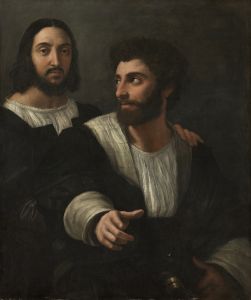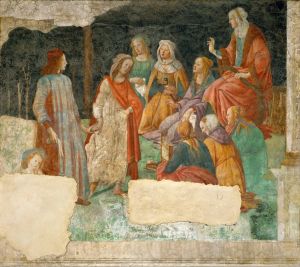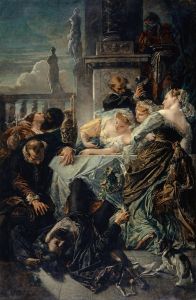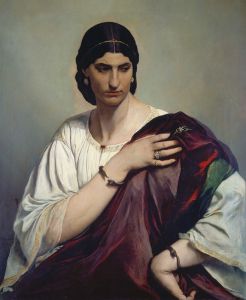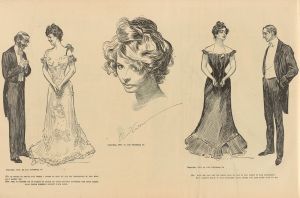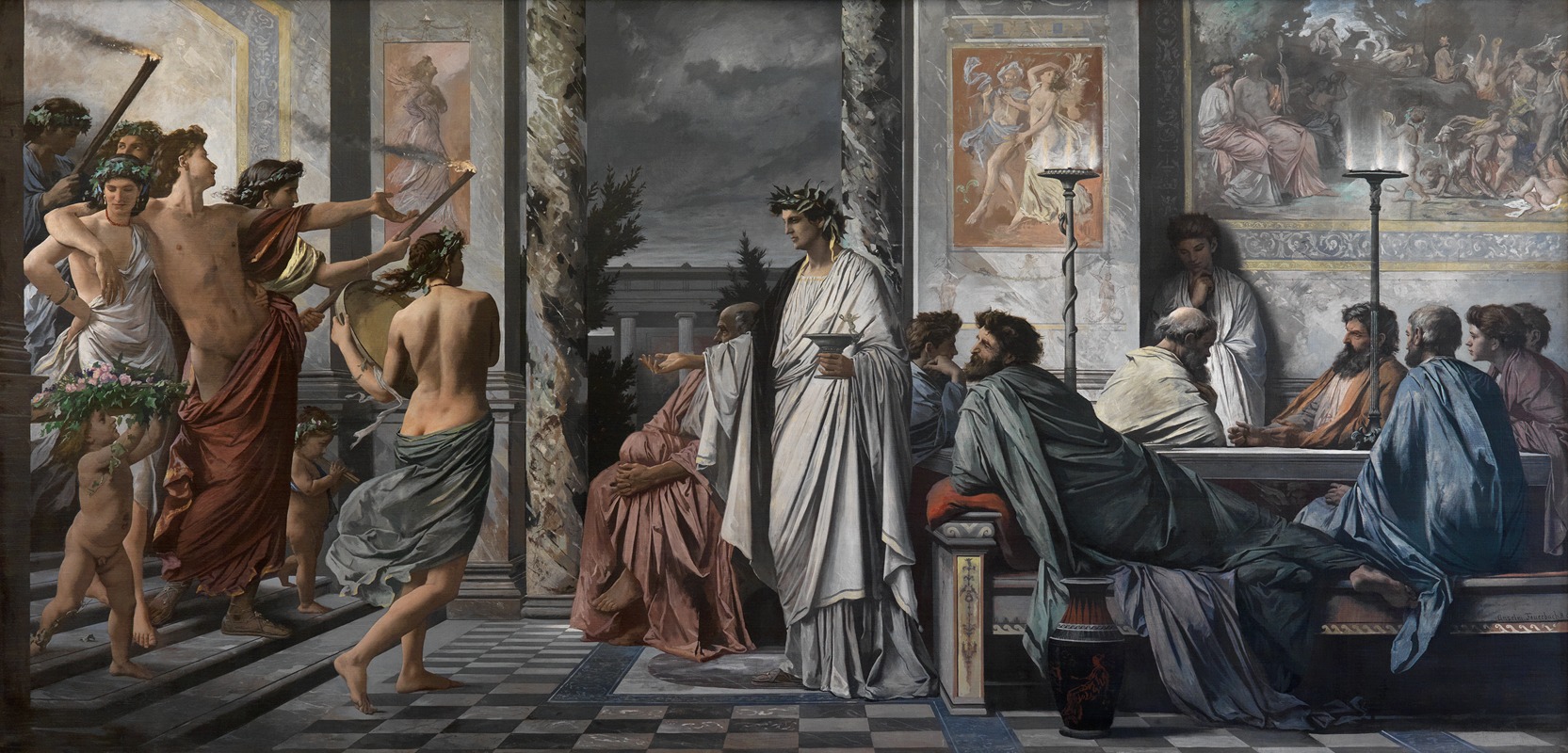
The banquet of Plato
A hand-painted replica of Anselm Feuerbach’s masterpiece The banquet of Plato, meticulously crafted by professional artists to capture the true essence of the original. Each piece is created with museum-quality canvas and rare mineral pigments, carefully painted by experienced artists with delicate brushstrokes and rich, layered colors to perfectly recreate the texture of the original artwork. Unlike machine-printed reproductions, this hand-painted version brings the painting to life, infused with the artist’s emotions and skill in every stroke. Whether for personal collection or home decoration, it instantly elevates the artistic atmosphere of any space.
Anselm Feuerbach's painting "The Banquet of Plato" is a significant work of art that reflects the artist's engagement with classical themes and his dedication to the ideals of beauty and intellectualism. Feuerbach, a German painter associated with the Düsseldorf school of painting, created this work during a period when he was deeply influenced by the classical traditions of ancient Greece and Rome. The painting is an interpretation of a scene from Plato's "Symposium," a philosophical text that explores the nature of love through a series of speeches by notable figures of ancient Athens.
"The Banquet of Plato" captures a moment from this dialogue, where philosophers and thinkers are gathered for a symposium, a traditional Greek banquet that involved not only feasting but also intellectual discussion and entertainment. Feuerbach's depiction is notable for its attention to detail and the serene, contemplative atmosphere that pervades the scene. The figures in the painting are arranged in a harmonious composition, reflecting the balance and order that were highly valued in classical art and philosophy.
Feuerbach's choice to depict this particular scene underscores his interest in the intellectual and cultural achievements of ancient Greece. The painting is characterized by its classical aesthetic, with figures rendered in a style reminiscent of ancient Greek sculpture. The use of light and shadow in the painting enhances the three-dimensionality of the figures and adds to the overall sense of depth and realism.
The work is also a testament to Feuerbach's skill in capturing the human form and his ability to convey complex philosophical ideas through visual art. Each figure in the painting is portrayed with a distinct personality, contributing to the dynamic interaction among the participants of the symposium. This attention to individual character reflects Feuerbach's understanding of the philosophical discourse that takes place in Plato's text.
Feuerbach's "The Banquet of Plato" is housed in the Alte Nationalgalerie in Berlin, where it continues to be appreciated for its artistic merit and its reflection of 19th-century European interest in classical antiquity. The painting is an example of how artists of the time sought to engage with the past, drawing inspiration from ancient texts and themes to create works that resonated with contemporary audiences.
In summary, Anselm Feuerbach's "The Banquet of Plato" is a masterful representation of a classical theme, executed with a keen eye for detail and a deep appreciation for the intellectual traditions of ancient Greece. The painting not only showcases Feuerbach's technical prowess but also his ability to translate philosophical concepts into a visual medium, making it a significant work in the canon of 19th-century European art.






